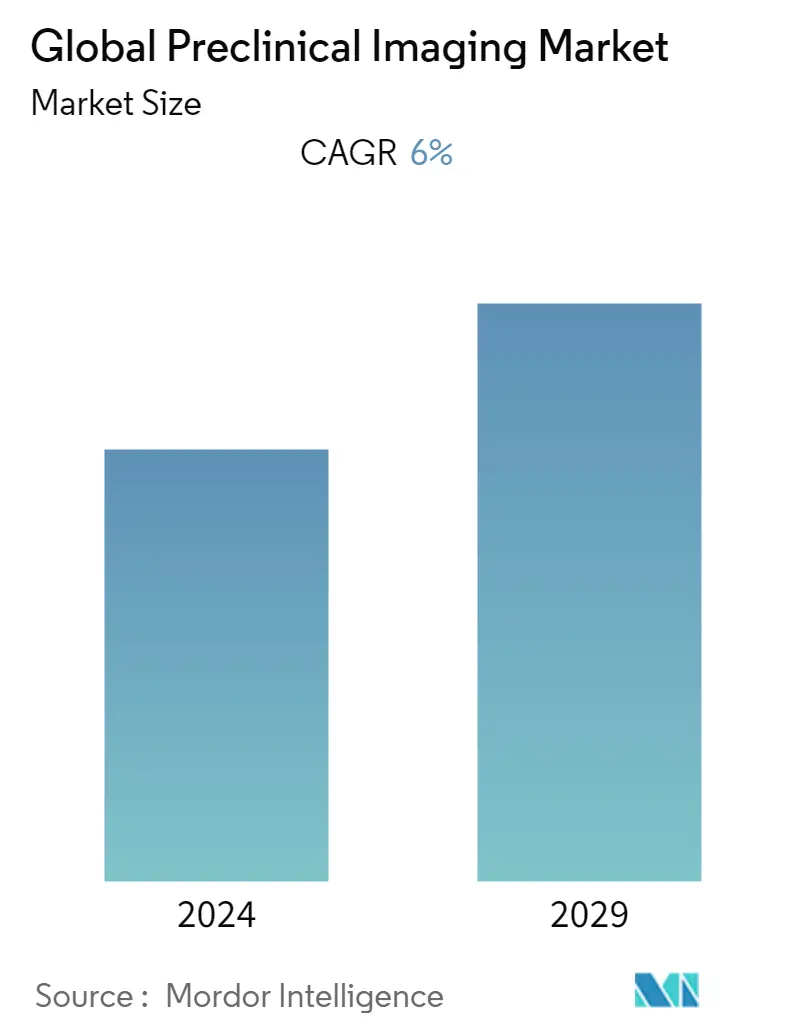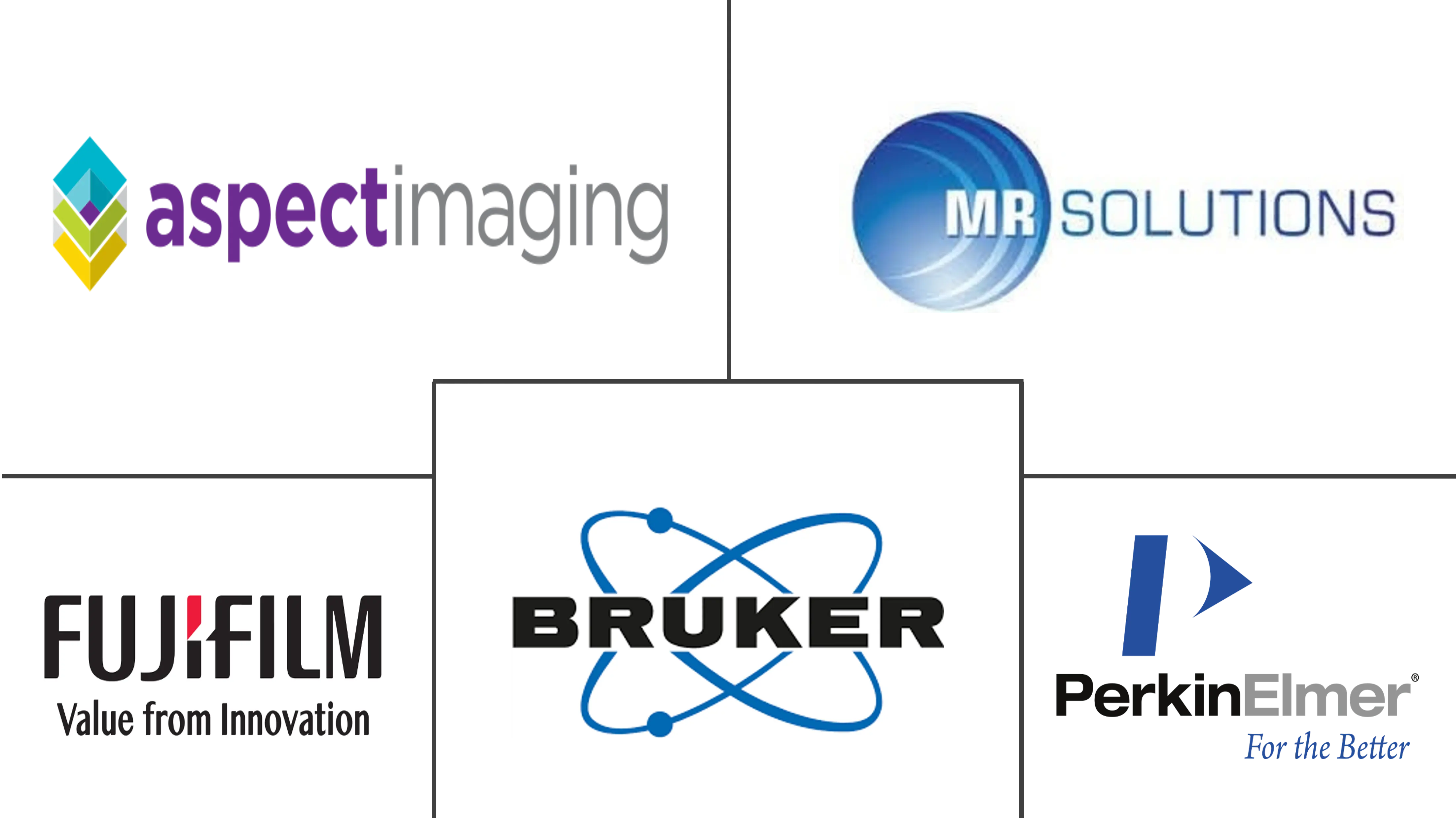Market Size of Global Preclinical Imaging Industry

| Study Period | 2019 - 2029 |
| Base Year For Estimation | 2023 |
| Forecast Data Period | 2024 - 2029 |
| CAGR | 6.00 % |
| Fastest Growing Market | Europe |
| Largest Market | North America |
Major Players
*Disclaimer: Major Players sorted in no particular order |
Need a report that reflects how COVID-19 has impacted this market and its growth?
Preclinical Imaging Market Analysis
The preclinical imaging market is expected to register a CAGR of nearly 6.00% during the forecast period (2022-2027).
The current coronavirus disease 2019 (COVID-19) crisis has worsened, and clinical operations have changed dramatically. According to the article "The Current Coronavirus Disease 2019 (COVID-19) Crisis Continues to Grow and Has Resulted in Marked changes to clinical operations," published in 2020, academic medical centers and universities have rushed to shut down scientific research activities to maximize social distancing and minimize the spread of infection to research staff and others with whom they might come into contact, in parallel with clinical preparedness. Researchers in the field of radiology were wrestling with these issues, which will continue to affect present and future imaging studies.
However, with travel restrictions and improved sanitary precautions in place, Several manufacturers have resumed operations. Euro-BioImaging Nodes, for example, are tailored to the COVID-19 setting to give services to external users. Furthermore, Euro-BioImaging is assisting COVID-19-related research efforts, such as major drug screening projects, with picture data exchange. The company is collaborating with EU-OPENSCREEN, a partner research infrastructure. Using human cells and a SARS-CoV-2 isolate, EU-OPENSCREEN tested 5,632 chemicals for their ability to suppress viral-induced cytotoxicity to identify potential candidates for clinical trials against SARS-CoV-2. This is expected to boost the demand for preclinical imaging during the COVID-19 pandemic.
Also, in March 2020, MILabs improved their preclinical diagnostic U-CT system for in-vivo imaging of COVID-19 animal models in anticipation of rising demand for antiviral research tools and to enable the testing of coronavirus vaccines and medications. Ultra-high-resolution non-invasive lung imaging is one of the new features, allowing researchers to pinpoint the exact location of diseased processes in the bronchi of mice, guinea pigs, and ferrets. Furthermore, employing intrinsic freeze-frame lung imaging, up to four mice models can be scanned simultaneously for high-throughput screening of respiratory syndrome-associated coronavirus genotypes.
The major factors leading to the growth of the preclinical imaging market include the technological advancements in molecular imaging, increasing demand for non-invasive small animal imaging techniques, and an increase in preclinical research funding, by both private and public organizations.
Molecular imaging is a rapidly developing multidiscipline, which involves molecular biology, chemistry, computer, engineering, and medicine. It can recognize non-invasive and real-time visualization and measurement of the physiological or pathological process in the living organism at the cellular or molecular level.
Multimodal molecular imaging can play important role in the clinical care of various diseases by improving clinicians' ability to perform screening, surveillance, staging, prognosis, planning and therapy guidance, monitoring therapy efficacy, and assessing recurrence.
With its rapid technological advances, presymptomatic detection, targeted therapy, and personalized medicine may be possible shortly through the use of multimodal molecular imaging. Aspect imaging developed Aspect's M2 platform and the suite of products enable researchers to harness the power and quantitative insights of MRI for small animal phenotyping and drug development but without the cost, complexity, and technical burden of traditional MRI systems.
